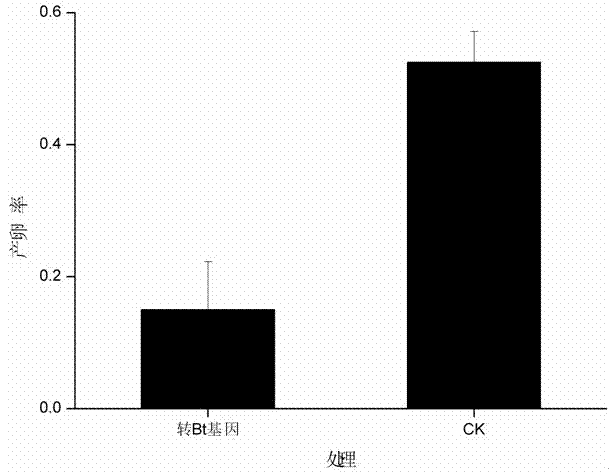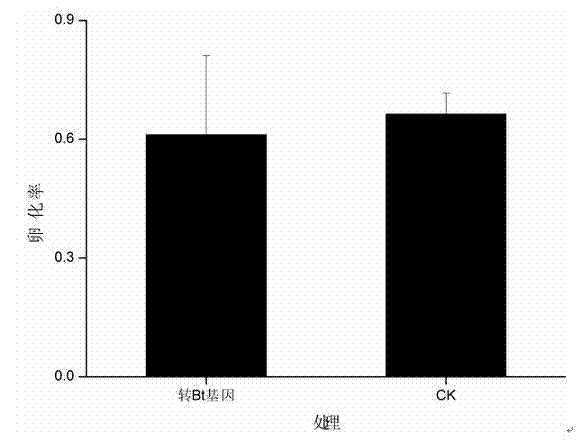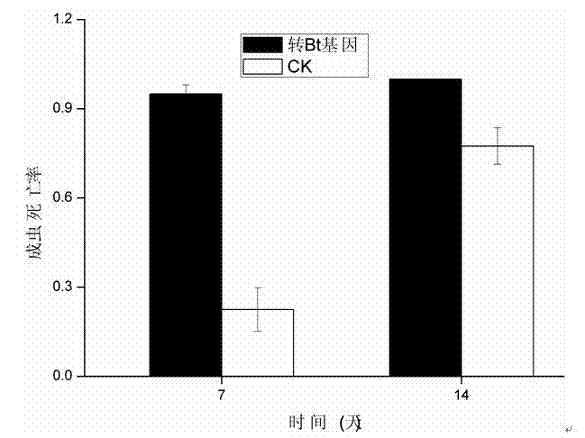Detection method for evaluating impact of transgenic cotton on dung beetles
A detection method and transgenic technology, applied in the application, animal feed, animal feed and other directions, can solve the problem of poor food selectivity, and achieve the effects of shortening the detection period, low cost and simple operation method.
- Summary
- Abstract
- Description
- Claims
- Application Information
AI Technical Summary
Problems solved by technology
Method used
Image
Examples
Embodiment
[0022] At the end of August 2012, 200 g of cotton leaves from the transgenic Bt cotton variety (Zhong 30) and its parents (Zhong 16) were harvested and brought back to the laboratory. They were placed in the refrigerator at -10°C for 24 hours and then thoroughly pulverized. The particle diameter was less than 0.03mm. Evenly mix 40 g of crushed cotton leaves with 360 g of fresh cow dung; put 400 g of the mixed sample into a gauze bag with a mesh size of 0.2 mm, and then inoculate 8 captured dung beetles (wandering beetles) into the gauze bag , the gauze bag was sealed and placed on the outdoor surface; the number of beetle eggs, larvae and adults in the gauze bag were recorded on the 7th, 14th and 21st day respectively, and the egg laying rate, egg hatching rate and mortality were calculated.
[0023] The results showed that the oviposition rate of beetles in Zhong30 treatment was significantly lower than that of Zhong16 ( figure 1 ); there was no significant difference in egg...
PUM
| Property | Measurement | Unit |
|---|---|---|
| Diameter | aaaaa | aaaaa |
Abstract
Description
Claims
Application Information
 Login to View More
Login to View More - R&D
- Intellectual Property
- Life Sciences
- Materials
- Tech Scout
- Unparalleled Data Quality
- Higher Quality Content
- 60% Fewer Hallucinations
Browse by: Latest US Patents, China's latest patents, Technical Efficacy Thesaurus, Application Domain, Technology Topic, Popular Technical Reports.
© 2025 PatSnap. All rights reserved.Legal|Privacy policy|Modern Slavery Act Transparency Statement|Sitemap|About US| Contact US: help@patsnap.com



